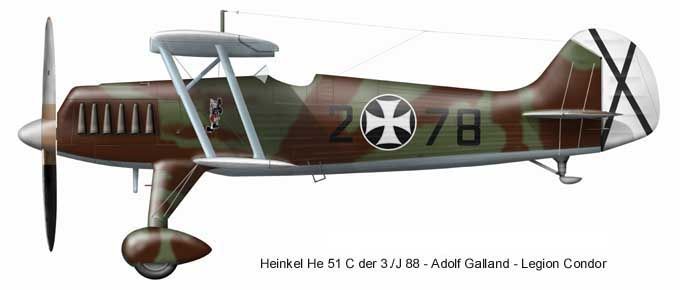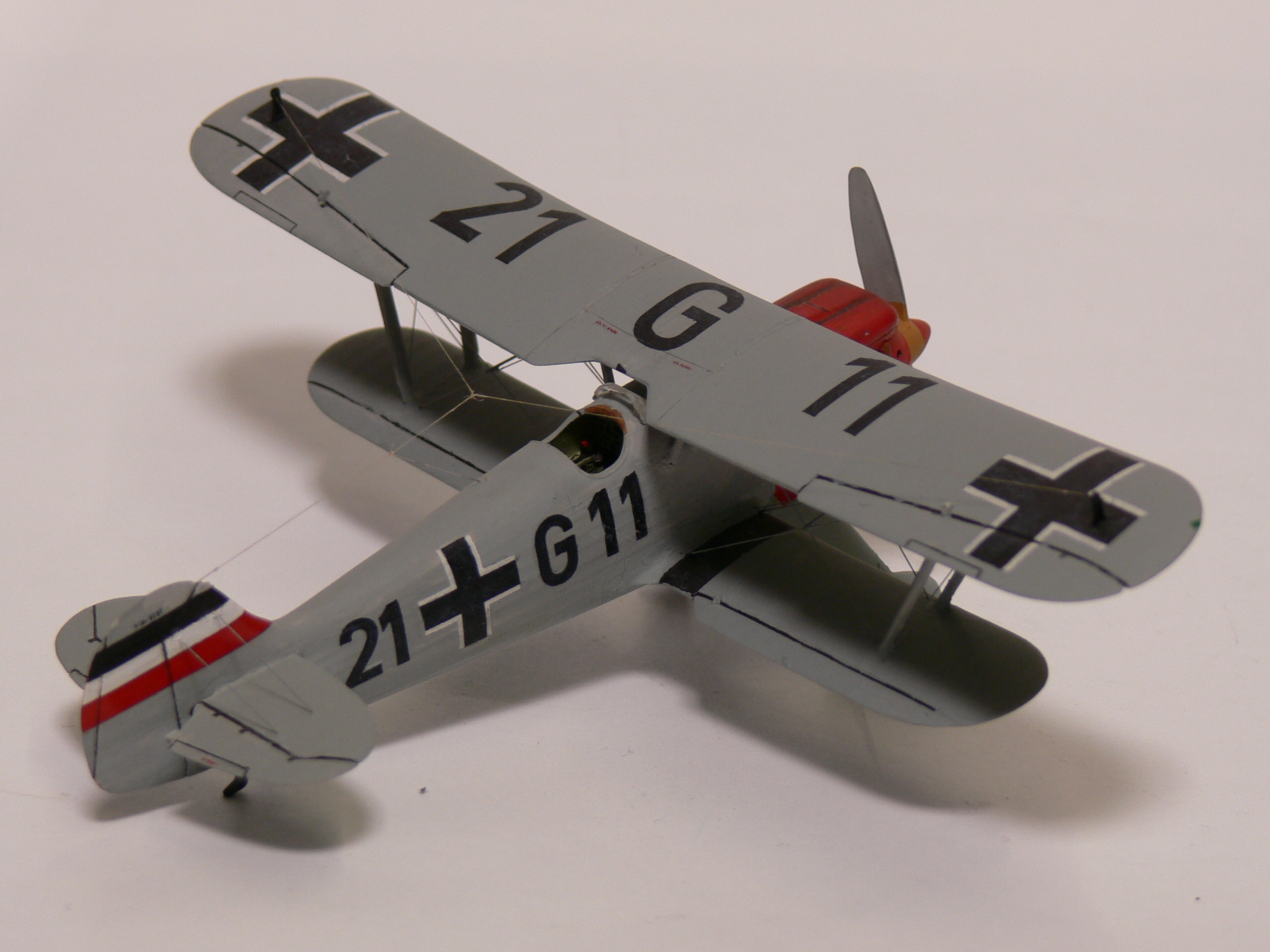Model of the month April 2021 Heinkel He 51
Heinkel He 51 in the Spanish Civil War
The Heinkel company was founded in Warnemünde/Rostock in the early 1920s, after Ernst Heinkel had worked as a designer first at Albatros, then at Hansa-Brandenburg and finally at Caspar in Travemünde.
He knew well how to build and sell aircraft in these difficult times. Partly this took place in Sweden to avoid the provisions of the Versailles treaties, as other German companies did to escape existential hardship.
Even in Weimar times, when a German Air Force was secretly prepared via the Reich Ministry of Transport, Heinkel designed fighter aircraft, e.g. The HD (Heinkel HD = biplane, Heinkel HE = monoplane) 23, 37 and 43 up to the immediate predecessor HD 49 (this type nomenclature was changed with the "transfer of power" over to the RLM (Ministry of Aviation) Now all Heinkel aircraft were called He.
The HD 49 was technically at the height of its time and was 200 km/h fast. The resulting He 51 flew for the first time in May 1933, and was the first "real" fighter in the Third Reich after the Arado Ar 65. It served as basic equipment for the coming Luftwaffe, which only existed secretly and officially bevor 1935. The first fighter squadrons were equipped with it until the arrival of the even more powerful Arado Ar 68, also still a biplane.
The Third Reich, together with Fascist Italy, interfered in the emerging Spanish Civil War when General Franco putsched against the elected left-wing socialist government, which was then in turn sponsored by the Soviet Union.
And so it was that the He 51 entered service in that war in 1936 via the German Legion Condor Expeditionary Corps. Initially used as a fighter, it soon fell behind in military tactics, because the Soviet fighters of the Republicans, such as the Polikarpov I-15 and later I-16 ("Rata", "Mosca"), the first braceless single-deck fighter with retractable landing gear) were clearly superior to the He 51. The latter then served only as a ground combat aircraft with which new tactics were tested. One of its pilots was Adolf Galland, who later became a fighter pilot general.
It was also used by the Franco-Spanish forces, and by the end of 1936 more than 50 aircraft were in service there. The fighter role was then taken over by the first proto-types of the Messerschmitt Bf 109 with great success.
Technical specifications:
Span (above) 11.00 m - (below) 8.60 m, length 8.50 m, height 3.30 m, wing area 27.20 m², empty weight 1615 kg, take-off weight 1900 kg, engine: 1 x standing water Cooled V-12-cylinder BMW VI with 550 kW / 750 hp take-off power, 430kW / 585 hp continuous power, tubular steel fuselage, structure: fabric-covered wooden wing. Range 730 km / 2.3 h. v / max 330 km / h, v / trip 310 km / h. Service ceiling 7700 m, armament 2 x MG 17 / 7.92 mm.



-s-.JPG)